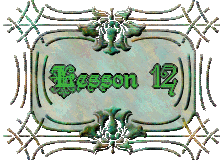




Elementary Principles of Vegetable Plant Histology; The Plant Cell (Definition, Description, Composition and Illustration of a "Typical" Plant Cell); Various Structures and Components of the Plant Cell (The Cytoplasm, The Nucleus, The Endoplasmic Reticulum and Ribosomes, Golgi-Bodies (Apparatus), Lysosomes, Mitochondria, Chloroplasts (The Plastids), The Plasma-Membrane, The Cell-Sap, The Vacuole, The Cell-Wall, Cellulose Walls, Lignified Walls, Suberized and Cutinized Walls, Mucilaginous Cell-Walls, Chitinous Walls, Mineral Deposits, Parenchymatous Cells, Prosenchymatous Cells, Pitted Cells, Ducts or Tracheids).



Introduction; Organic Cell-Contents (Chloroplasts, Leucoplastids, Hemicelluloses, Starch Grains, Sugars, Inulin, Fixed Oils and Fats, Gums and Mucilages (Resins and Oleoresins), Volatile Oils, Tannins, Alkaloids and Glycosides); Inorganic Cell-Contents (Proteins or Aleurone Grains, Minerals, Crystals and Cystoliths).



Introduction; Rejuvenescence; Conjugation; Cell Division; Free Cell Formation; Cell Formation by Budding; The Tissues; Functional Classification of Tissues (Tissue-Systems); The Meristematic (Parenchymatous) Tissues; Secondary Increase in Thickness (Secondary Meristem); Rings of Annual Growth.



The Tegumentary Tissues; The Epidermis; Leaf Epidermis; Testa (Seed) Epidermis; The Periderm (Cork Cells, Stone Cell-Cork, Cork, Fibers, Parenchyma, Stone-Cells, etc.); Stone Cell Periderm; Parenchyma and Stone Cell Periderm; Origin of Cork Cells.



Introduction; Water-Pores; The Stomata; Lenticels; Intercellular Spaces.



Mechanical (Fundamental or Ground) Tissues; Xylem (Primary and Secondary); Fibers (Cortical, Pericyclic, Xylem and Phloem); Bast Fibers (Crystal-Bearing, Porous and Striated, Non-Porous and Striated; Non-Porous and Non-Striated, Occurrence in Powdered Plant Drugs); Wood Fibers; Collenchyma Cells; Schereids or Stone Cells (Branched or Unbranched, Porous and Striated, Porous and Non-Striated); Endodermal Cells (Endodermis, Structure of Endodermal Cells); Hypodermal Cells.



Absorptive Tissue; Root-Hairs (Water Absorption by Leaves); Glandular Tissue; Plant Hairs (Epidermal Trichomes); Forms of Plant Hairs or Trichomes (Papillae, Unicellular Non-Glandular Hairs, and Multicellular Hairs).



Conducting Tissue; Vessels (Annular, Spiral, Sclariform, Reticulate, Pitted, and Pitted with Bordered Pores); Sieve Tubes and Sieve Plates; Medullary Bundles, Rays and Cells (Function, Occurrence, The Medullary Ray Bundle, The Medullary Ray, The Medullary Ray Cell, Structure of Cells, and Arrangement of Cells in the Ray); Latex Tubes (Function and Types); Parenchyma (Cortical, Pith, Wood, Leaf, Aquatic Plant, Endosperm, Phloem and Palisade); The Vascular Tissues (Vascular and Fibro-Vascular Bundles, Procambrium Bundles, Collateral Bundles, Protoxylem, and Protophloem); Relation of Vascular Bundles to the Increase in Thickness of Plant Members; Arrangement of Vascular Bundles; Types of Fibro-Vascular Bundles (Radial, Concentric, Collateral, Bi-Collateral and Open Collateral).



Secretory Tissues; Secretion Cavities (Schizogenous, Lysigenous, Schizo-Lysigenous, Oleoresin Canals, Unicellular Secretin Cavities, Mucilage Cavities, Latex [Laticiferous] Tissue [Laticifers]); Synthetic Tissue; Photo-synthetic Tissue; Storage Tissue; Storage Cells (Cortical and Pith Parenchyma, and Wood Parenchyma); Storage Cavities (Crystal, Secretion, Latex, Oil Cavities, Glandular Hairs, Stone Cells and Bast Fibers); Storage Walls.



Microscopical Characteristics of Plant Drugs; Microscopy; Microchemistry (Isolation and Identification of Constituents); Microscopical Examination of Powdered Plant Drugs (Constituents, Degrees of Fineness, Deterioration, Milling, Cellular Structures, Contents of Living Cells); Macroscopical Features of Identification (Identification by Color, Odor, Taste and Adulterants); Diagnostic Characteristics of Powdered Plant Drugs; Techniques in Microscopy (Mountants, Clearing Agents and Mounting Media, Magnification and Field View, Measurements, Polarization, and Drawings for Publication); Phase Contrast Microscopy; Ultraviolet Microscopy; Electron Microscopy; Quantitative Microscopy (Lycopodium Spore Method, Vein-Islet Numbers, Stomatal Indices and Veinlet Termination Number); Preparation of Plant Drugs for Microscopical Examination and General Use of Reagents (Distribution of Tissues, Clearing, Defatting and Bleaching, and Disintegration and Isolation of Tissues); The Examination of Powdered Plant Drugs (Preliminary Tests and Microscopical Examination).



Alphabetical Listing of Reagents and Their Processes (Acetic Acid, Acid Fuchsin, Albumen, Alcohol, Alkaline Solution of Corallin, Alkannin, Ammoniacal Solution of Copper Oxide, Ammonium Carbonate, Molybdate and Vanadate, Balsam, Barium Chloride, Benzoazurin, Benzol, Berlin Blue, Bismarck Brown, Boric Acid, Borax-Carmine, Bordeaux Red, Borodin's Method, Brown Discoloration of Material in Alcohol, Calcium Nitrate, Canarin, Carbolic Acid (Phenol), Cedar Oil, Chloral Carmine, Chloral Hydrate Solution, Chloral Hydrate-Iodine, Chloral Hydrate and Glycerin, Chlorinated Soda Solution, Chloroform, Calcium Chloroiodide, Zinc Chloro-iodide, Chlor-Zinc-Iodine Solution, Chlorophyll Solution, Chrom-Acetic Acid, Chromic Acid Solution, Chromic and Nitric Acids Solution, Clearing Media, Clove Oil, Collodion, Conge-Red, Copper Acetate, Corrosive Sublimate, Cresol, Cuprammonia, Cyanin, Dahlia, Dammar Lac, Decalcification, Decolorization, Dehydration, Delarfield's Hematoxylin, Desilification, Diastase, Digestive Fluids, Diphenylamine, Distilled Water, Double Staining, Eau de Javelle, Eosin, Ether-Alcohol, Fehling's Solution, Ferric-Ammonium Sulphate, Potassium Ferricyanide, Potassium Ferrocyanide, Fischer's Method of Demonstrating Cilia, Fixatives, Fuchsin, Gelatin, Gentian Violet, Glucose, Glycerin, Glycerin-Gelatin, Glycerin Gum, Gold Chloride, Gold Size, Gram's Method, Gum Arabic, Hematein, Hematoxylin and Eosin, Hematoxylin and Safranin, Hanging-Drop Culture, Hardening Processes, Hydrochloric Acid, Hydrogen Peroxide, India Ink, Infiltration, Iodine, Iodine and Alcohol, Iodine and Aluminum Chloride, Iodine and Glycerin, Iodine and Phosphoric Acid, Iodine and Potassium Iodide, Iodine and Sulphuric Acid, Iodine Green, Iodine Water, Iron Acetate, Iron Hematoxylin, Lactic Acid, Lactophenol, Lead Acetate, Lithium Carbonate, Maceration, Magnesium Sulphate and Ammonium Chloride, Mayer's Carmalon, Mercuric Chloride, Methyl-Alcohol, Methyl-Blue, Methylene-Blue, Methylene-Blue and Carbol-Fuchsin, Methyl-Green, Methyl-Green and Acetic Acid, Methyl-Violet, Millon's Reagent, Nitric Acid, Nutrient Media, Orchella (Orseille), Orseillin and Aniline Blue, Osmic Acid, Pepsin, Phospho-Molybic Acid, Picric Acid, Picro-Aniline Blue, Picro-Nigrosin, Potash Solution, Potassium Chlorate and Nitric Acid, Potassium Hydrate, Safranin, Salicylate of Soda, Salt, Shellac, Silver Nitrate, Sodium Carbonate Solution, Solution of Mercury Nitrate, Solution of Phloroglucinol, Solution of Potassium Cupri-Tartrate, Solution of Potassium Mercuri-Iodide, Solution of Ruthenium Red, Staining Intra Vitam, Sudan III Solution, Sulphuric Acid, Tannin and Antimonium-Potassium Tartrate, Test Solution of Ferric Chloride, Turnbull's Blue, Turpentine, Venetian Turpentine, and Xylol).



Substances Commonly Employed for the Purpose of Identifying the Overall Characteristics of Cell-Walls and Cell-Contents (Aconitine, Aleurone, Alkaloids, Allyl Sulphide (Garlic Oil), Amygdalin, Amylo-dextrine, Amyloid, Amylose, Anthochlorine, Anthocyanins, Antho-xanthine, Arabine, Asparagine, Atropine, Bassorin, Berberine, Betulin, Betuloretic Acid, Brucine, Caffeine, Calcium, Calcium Carbonate, Calcium Phosphate, Calcium Oxalate, Calcium Sulphate, Callose, Calycin, Cane Sugar (Sucrose), Carotin (Carotene), Cellulose, Chitin, Chlorophyll, Colchicine, Corydalin, Crocin, Curarin, Curcumin, Cutin, Cytisin, Datiscin, Dextrine, Diastase, Dulcite, Elaioplasts, Emulsin, Ethereal Oils, Eugenol, Fats and Fatty Oils, Frangulin, Fungus Cellulose, Gelatinous Sheaths, Globoids, Glucose, Glycogen, Gum, Hemicelluloses, Hesperidin, Indican, Inulin, Leucin, Lignified Membranes, Lipochromes, Magnesium, Maltose, Morphine, Mucilages, Myrosin, Narceine, Narcotine, Nicotine, Nitrates, Oxalic Acid, Paragalactan, Paramylum, Pectic Compounds, Pezizin, Phloridzin, Phloroglucin, Phosphoric Acid, Piperine, Proteids (Albuminous Substances), Protein Crystalloids, Protoplasm, Protoplasmic Connections, Pyrenoids, Reserve Cellulose, Resin, Ruberythric Acid, Rutin, Salicin, Santalin, Saponin, Seminose, Silica, Sinapine, Solanin, Spergulin, Starch, Strychnine, Suberin and Suberized Walls, Syringin, Tannins (Tannic Acid), Theobromine (Dimethyl-Xanthin), Tyrosin, Vanillin, Veratrine, Wax, Wound-Gum, and Xanthin).
